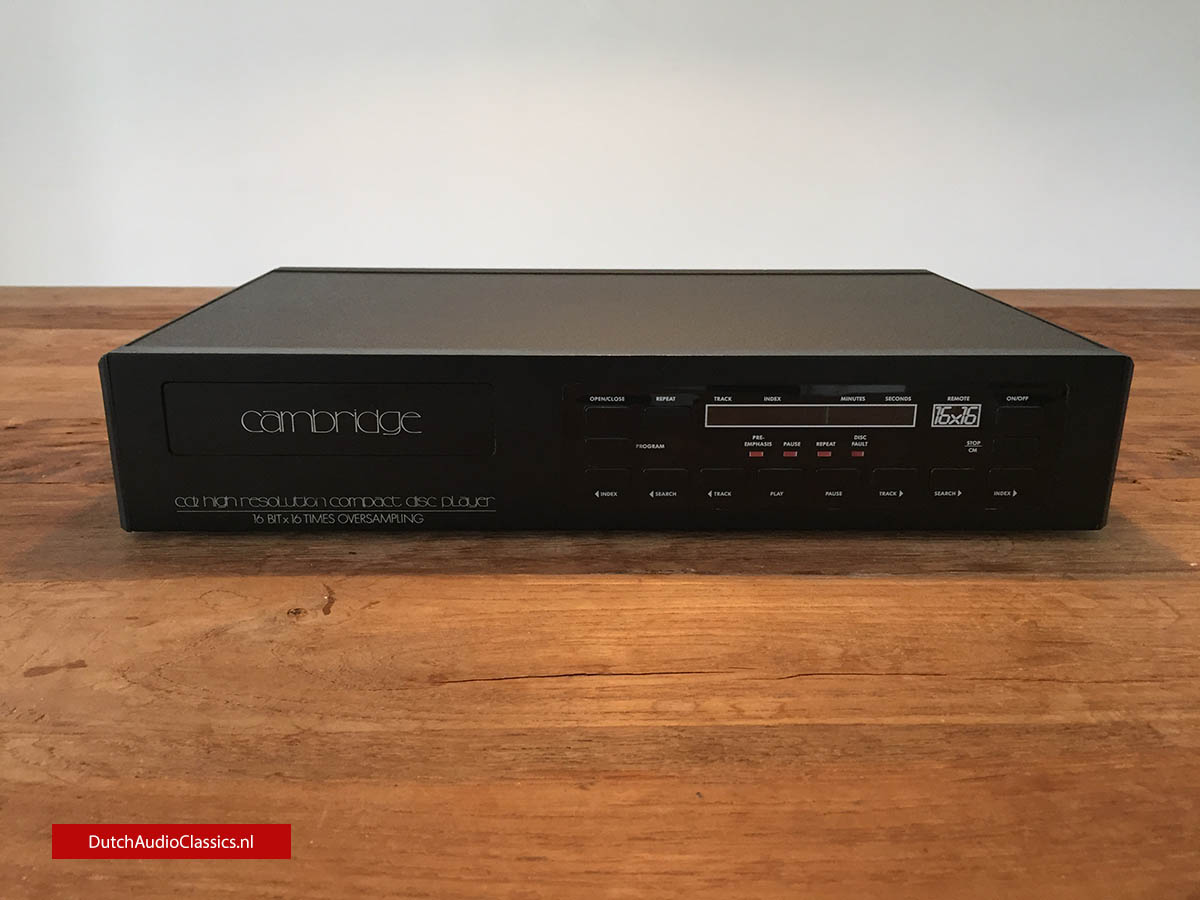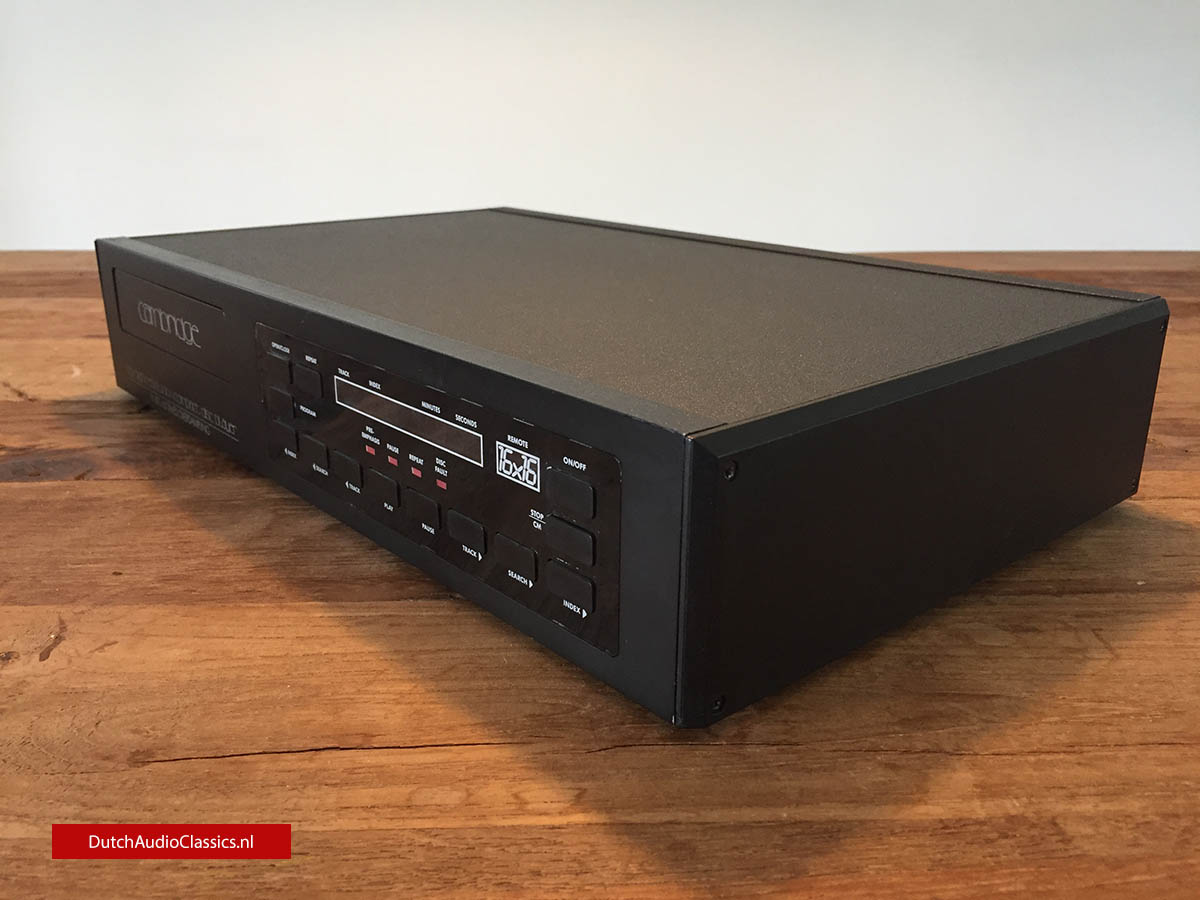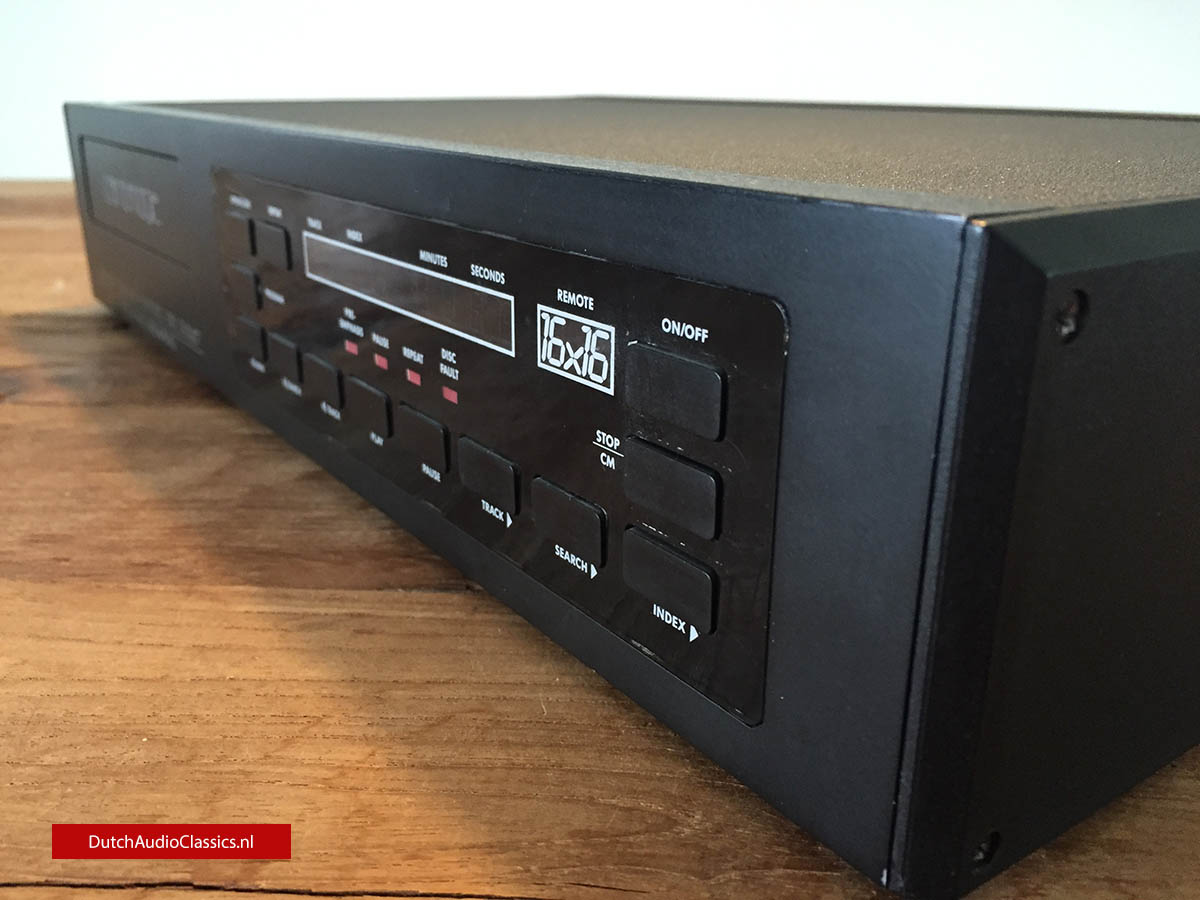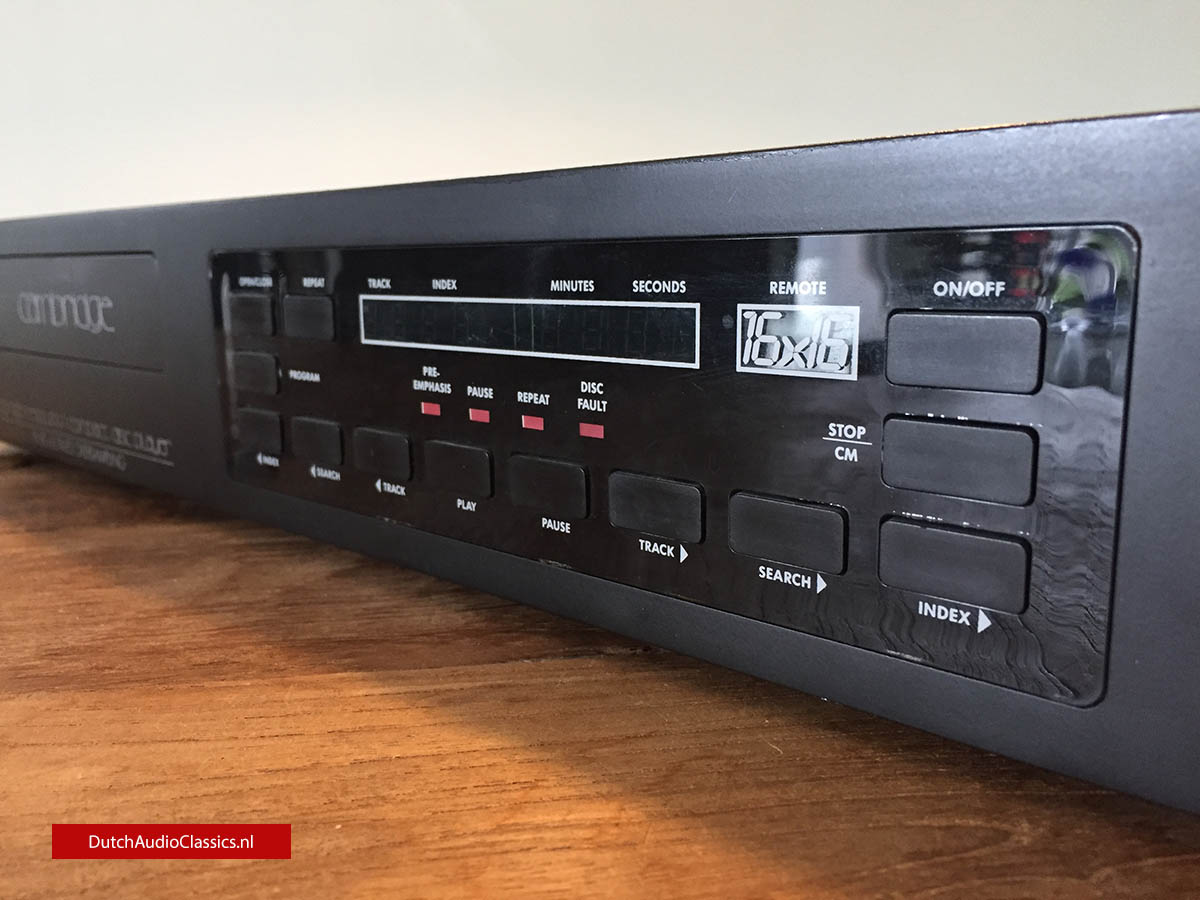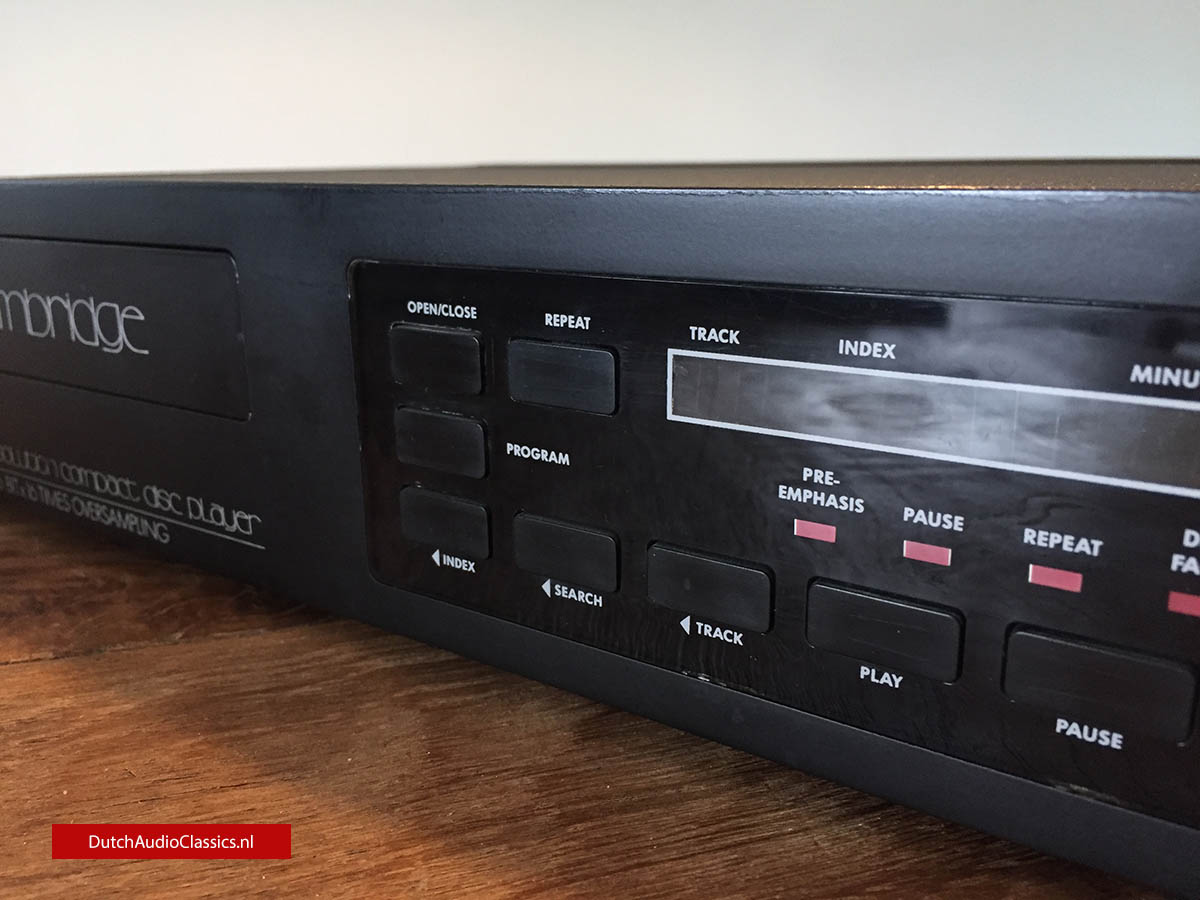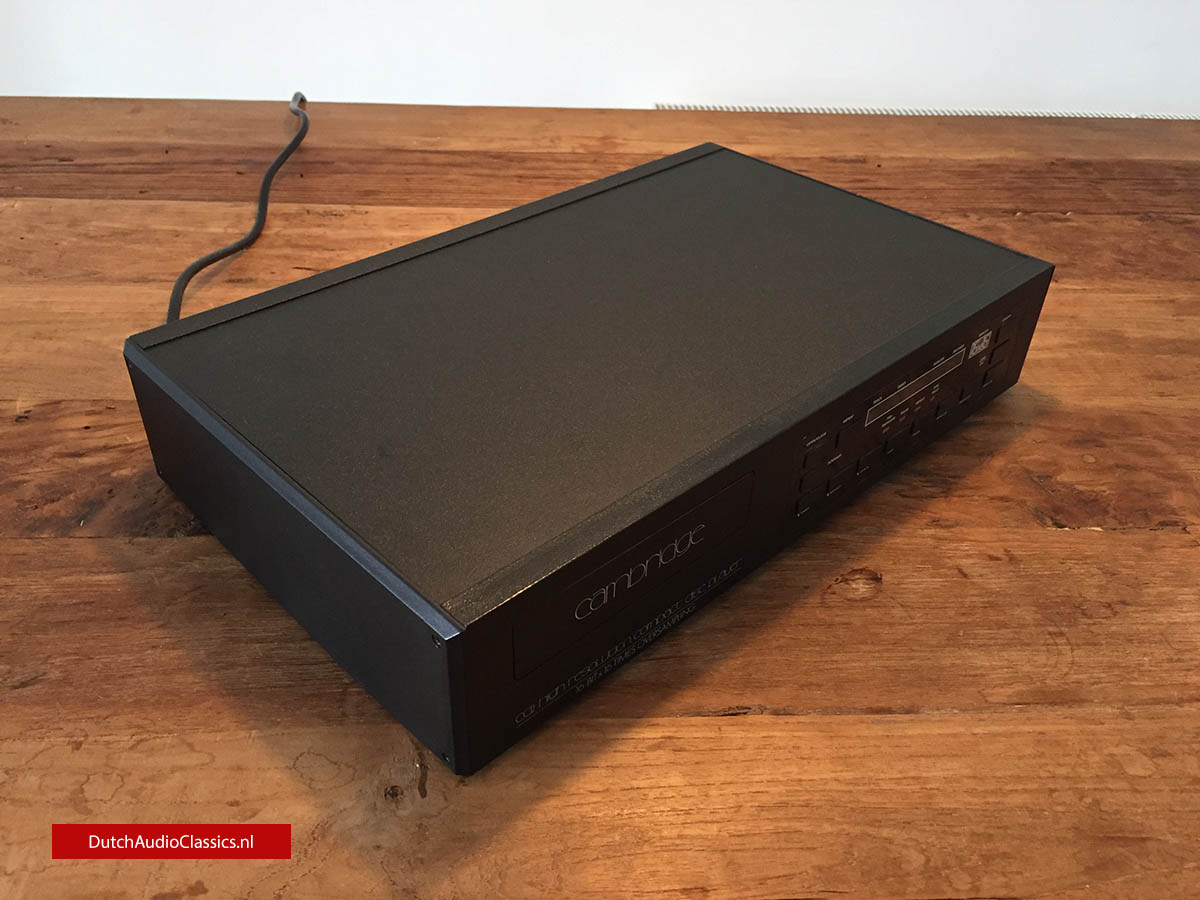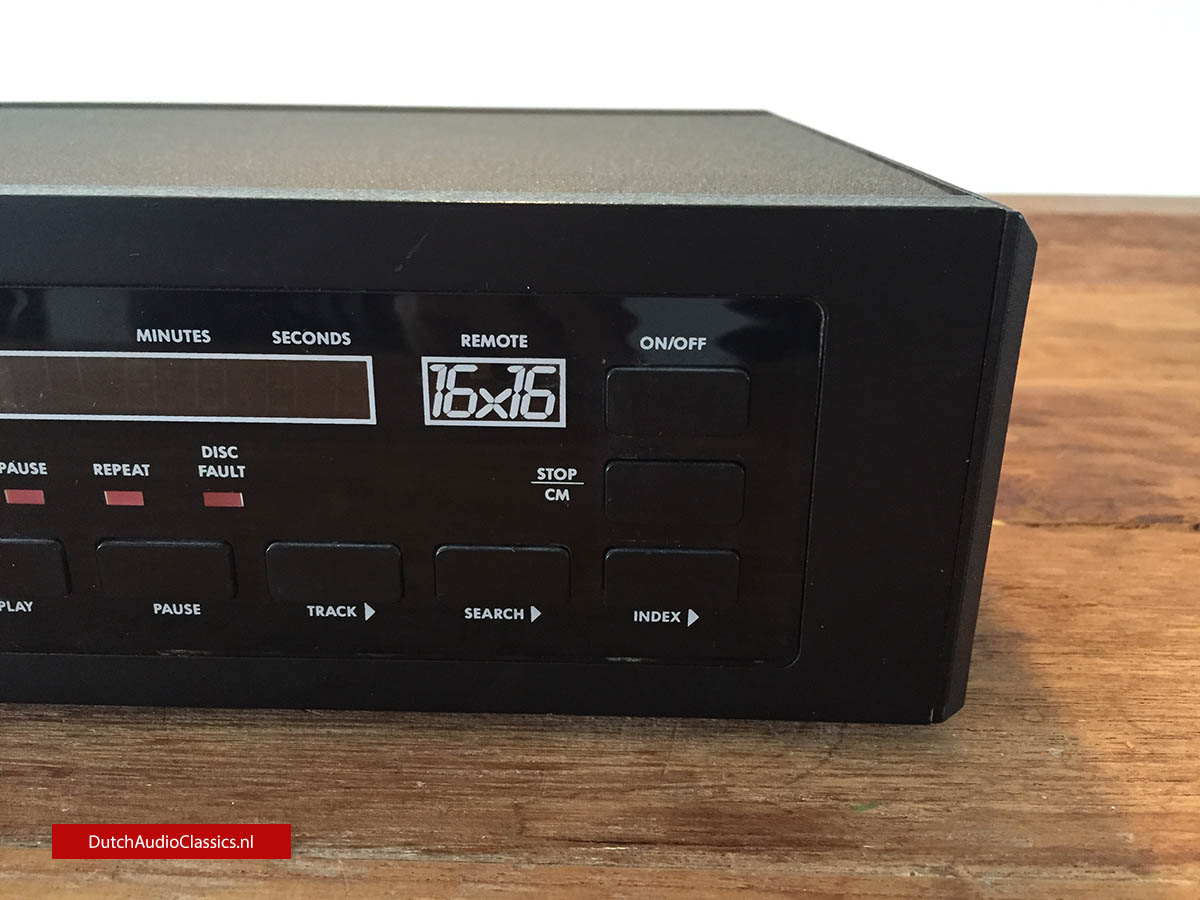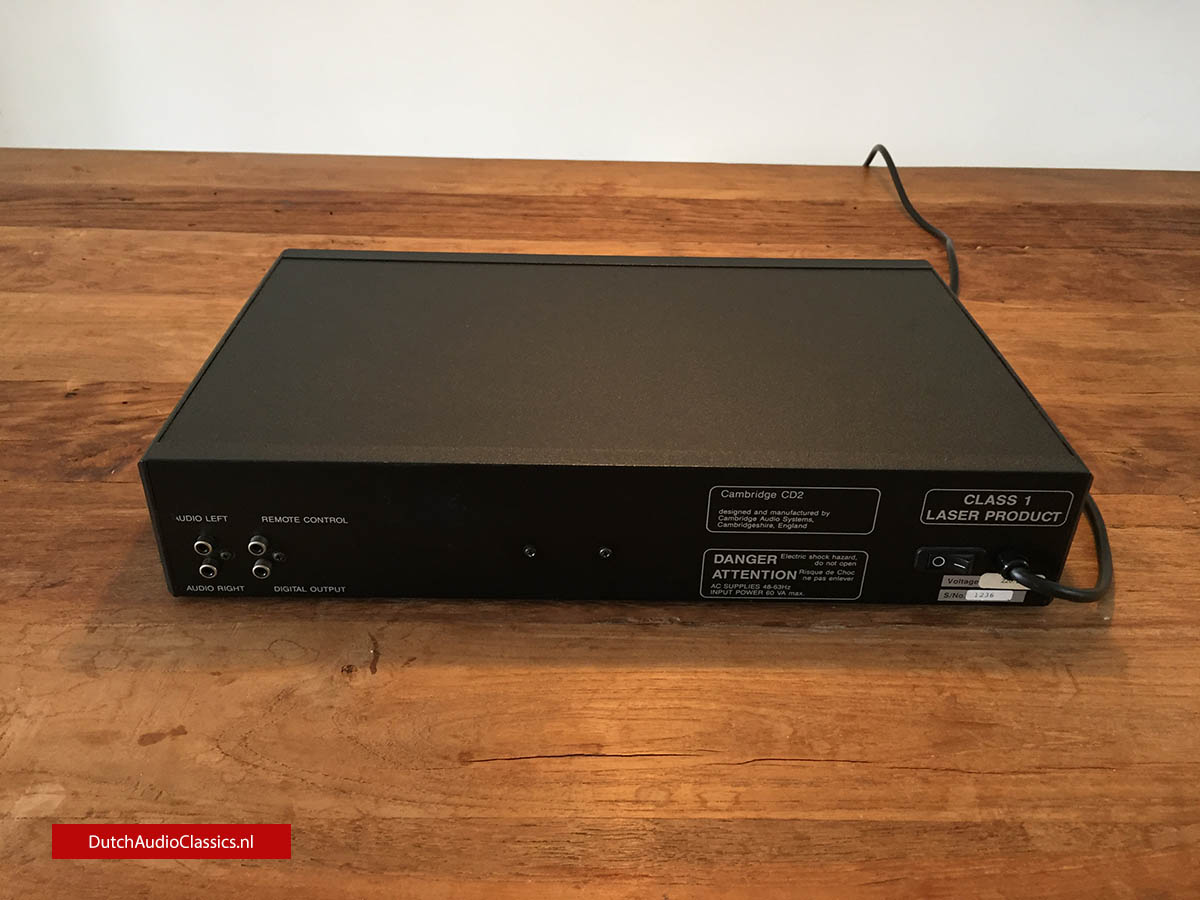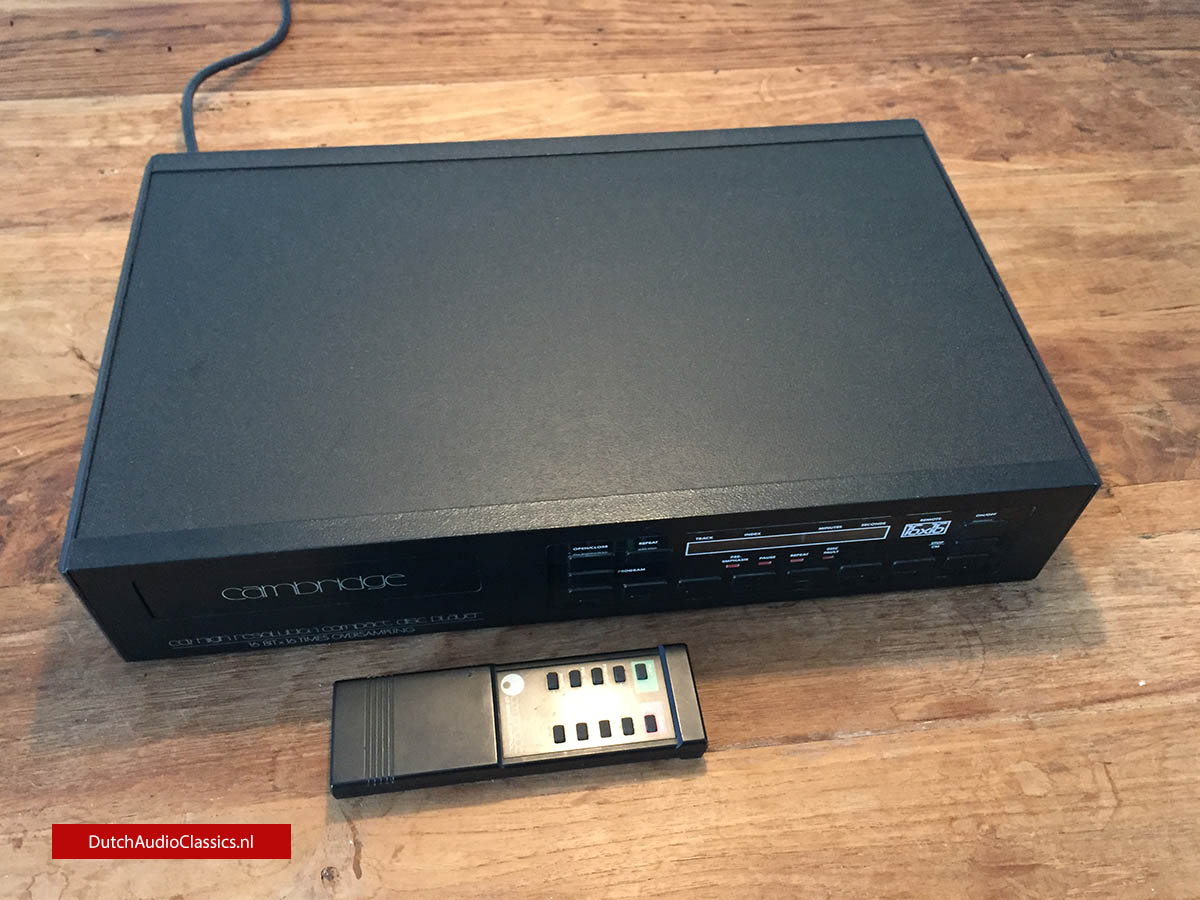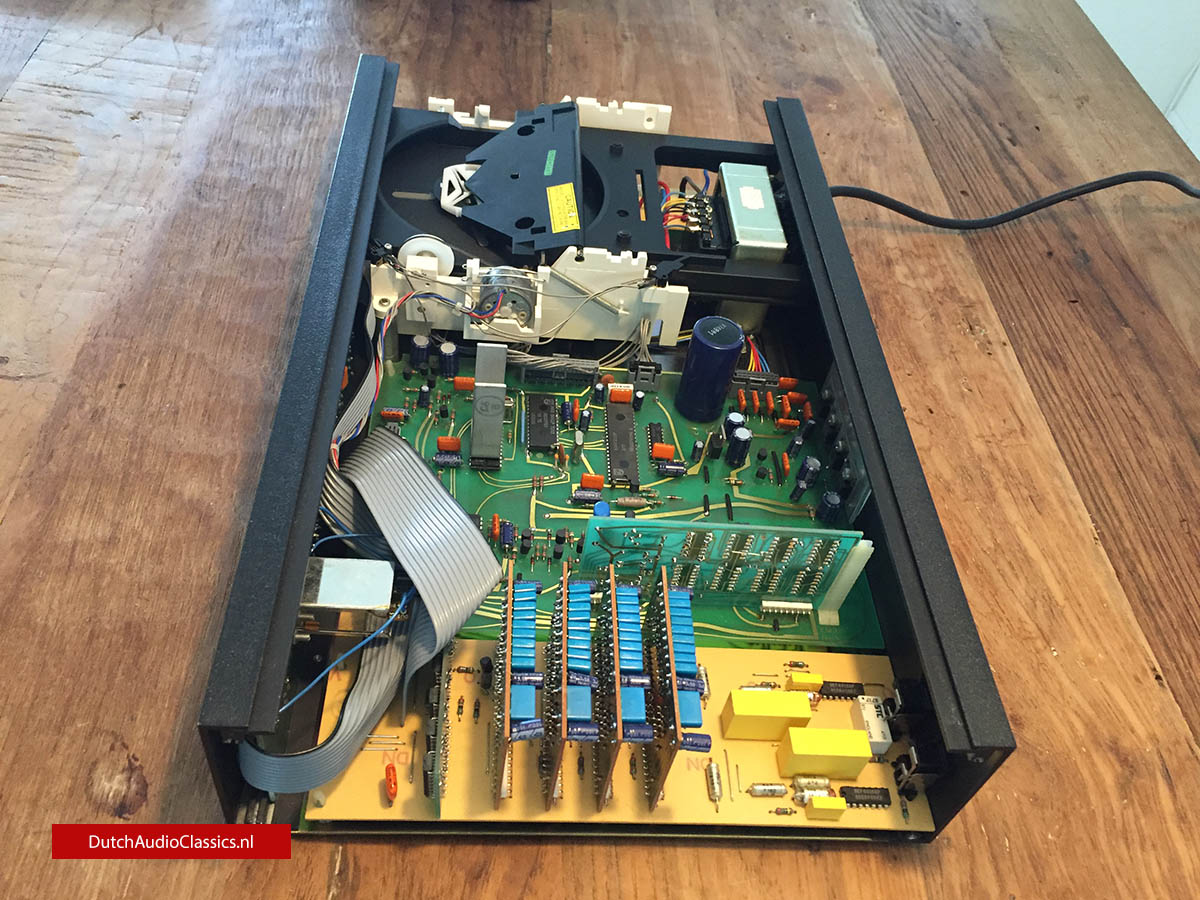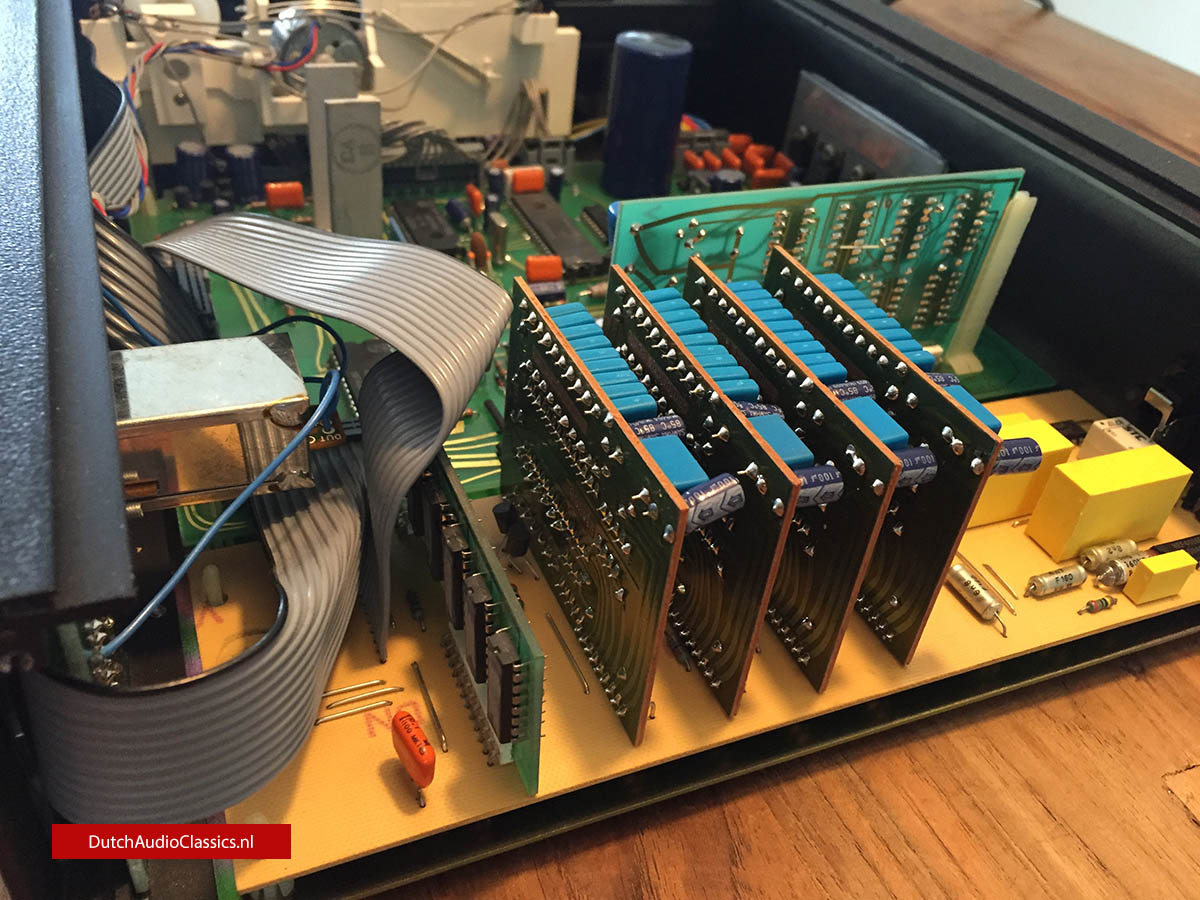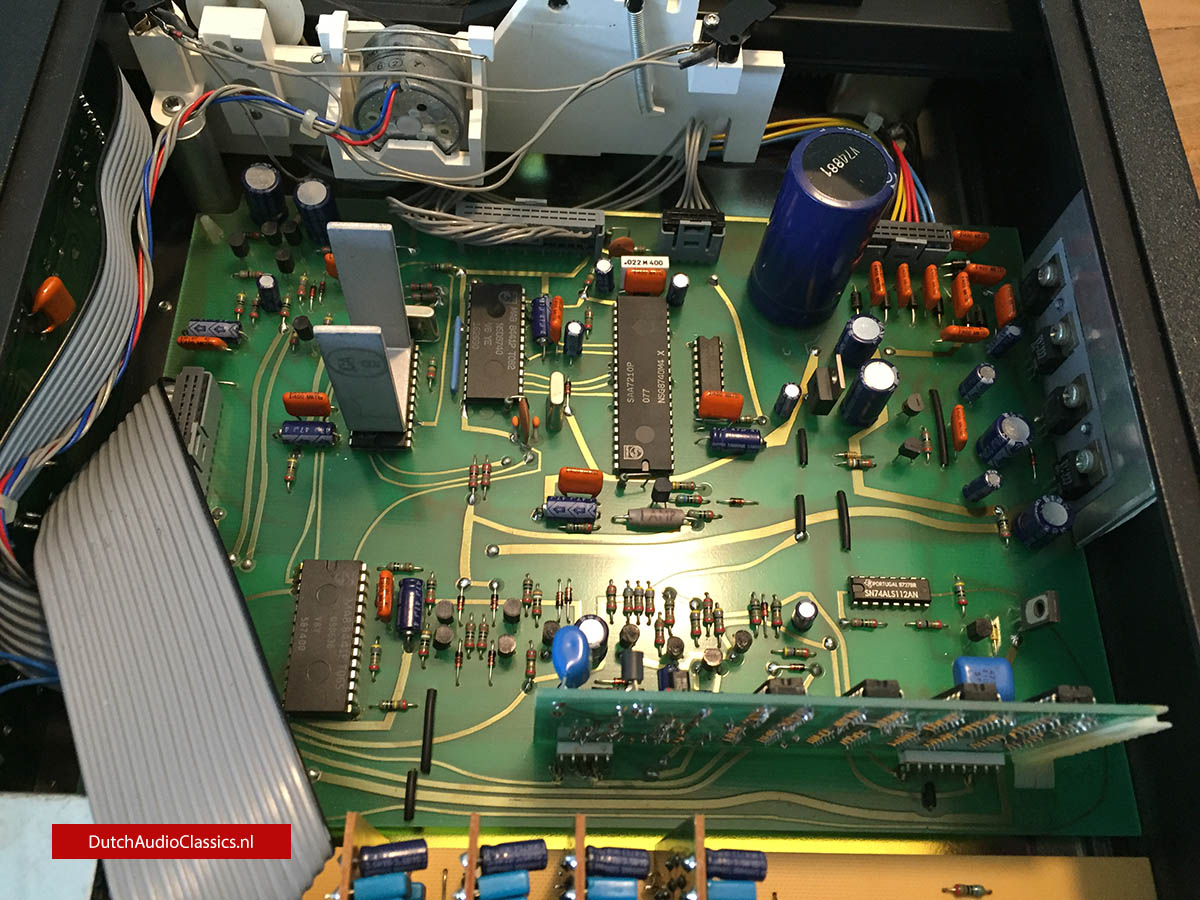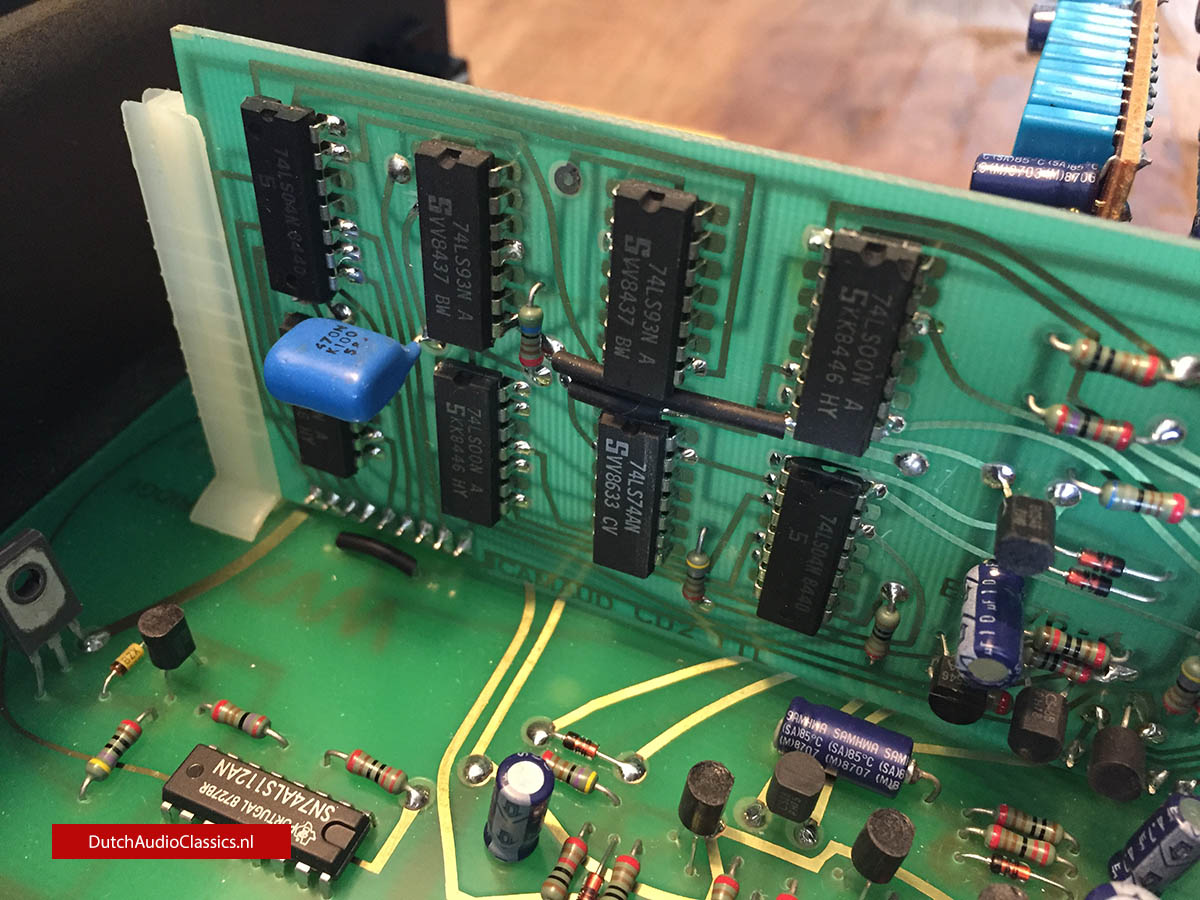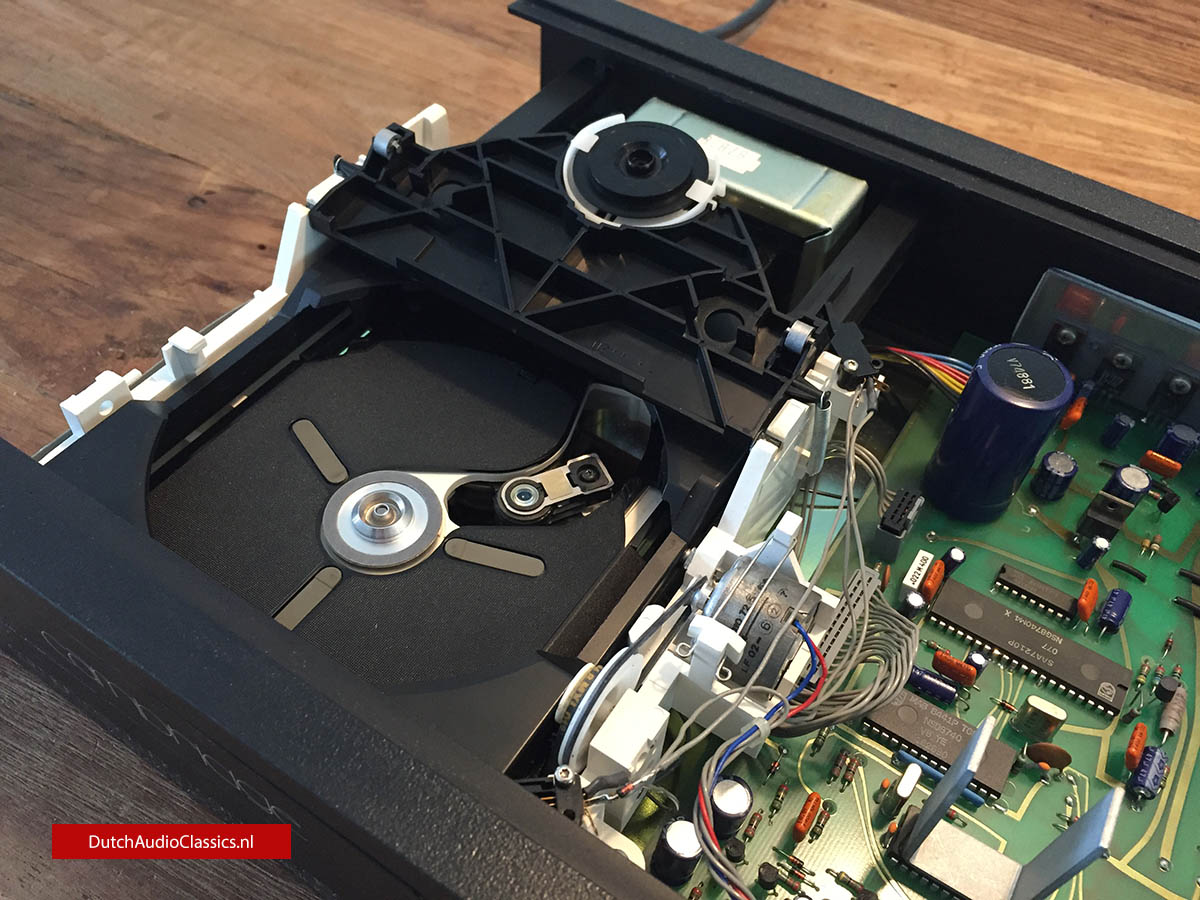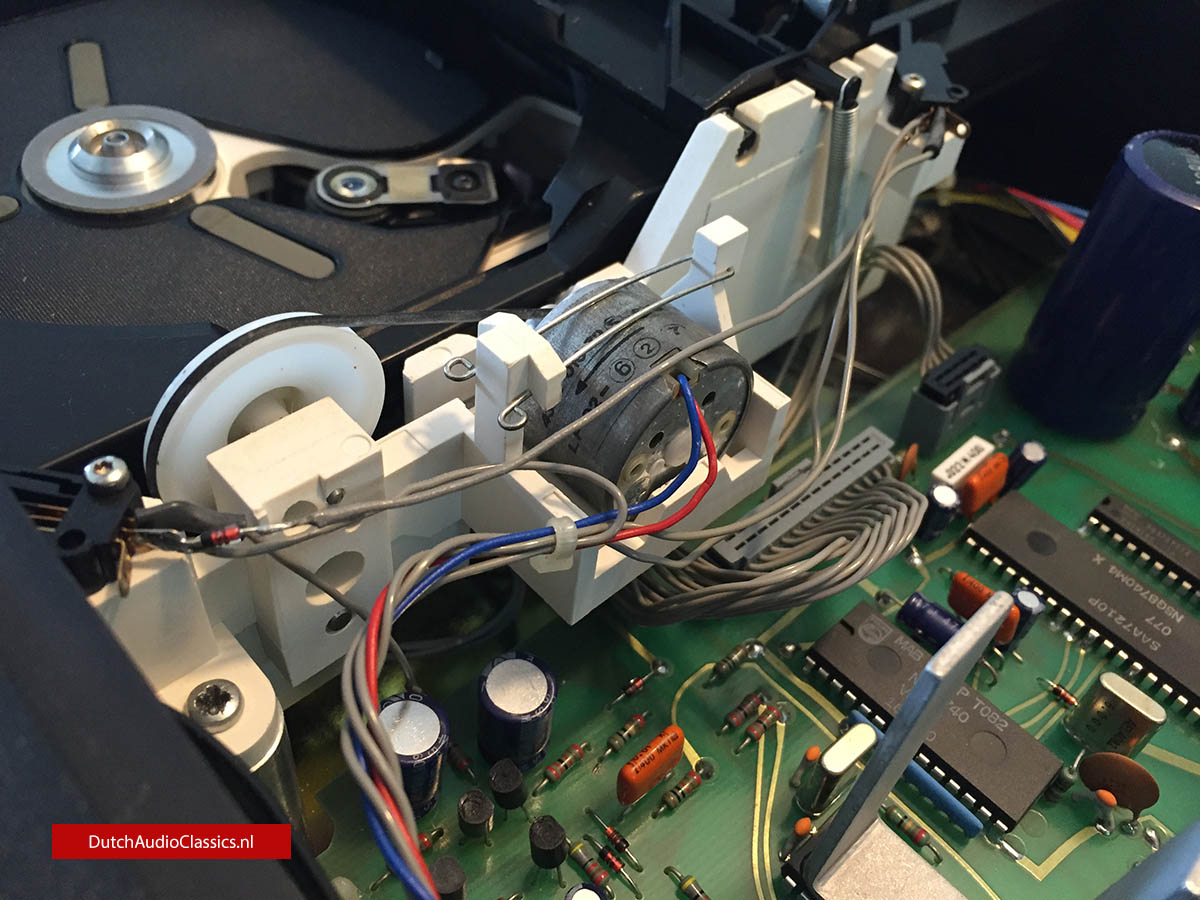December 1988 - Things have slowed somewhat this year. The newest machines don't sound that much better than the 1987 models, and in fact some of last year's players are still considered among the best (the Accuphases, for instance). The rate of improve ment is slowing. A fancy CD player bought today will probably hold its position for about a year to 18 months, as opposed to two years ago, when the average (as computed in these pages by our own JGH) was about 38 days.
Cambridge is a small British company which has been making high-quality amplifiers more or less for the home market for around 12 years. They made quite a worldwide splash a couple of years ago with their very expensive, two chassis CD1 player. This machine brought raves from critics both at home and abroad and smiles to the faces of all who heard it (it sure impressed me at the time). Unfortunately, too much good publicity can be almost as damag ing to a small company as bad publicity. In the case of Cambridge, it was simply that the good press increased demand for the CD1 beyond such a small company's ability to produce them. This led to an apparent downfall of qual ity control, followed quickly by a reputation for unreliability. Celestion, the speaker folks, are now distributing the line and say that all QA problems are in the past and that Cambridge products are once again up to their usual high standards (the review sample has given me no problems of any kind, and I've been using it daily for more than two months).
![Cambridge Audio CD2]()
The CD2 is the latest Cambridge player to hit these shores. It boasts the dual 16-bit Philips D/A converters and I6x oversampling. This puts the sampling component at almost 706kHz, which is far, far outside of the audio band width, making it unnecessary for Cambridge to use steep analog filters after the DACs; a sim ple, gentle-sloped 6dB/octave filter is sufficient to reject what ultrasonic spuriae remain after digital filtering. A conventional DAC operating at the 44.1kHz sampling rate needs an output filter with better than a 40dB/octave slope to be effective. Many first-generation CD players were designed with so-called "brickwall" ana log filters having as many as nine poles (stages of filtering) to meet this requirement. The results of these designs, as anyone who heard the Sony CDP- 101 can attest, were sonically disastrous. To obtain the resolution possible from 16x-oversampling, Cambridge's Stan Cur tis uses four time-shared DACs per channel, each running at one quarter the 16x rate and handling a quarter of the data, and sequenced so that the summed output is equivalent to a complete 16x reconstruction.
But there is more to CD players than just sampling rates and filter designs, and in these other areas, the Cambridge is a mixed bag. I counted four separate power supplies, each isolated from one another and regulated to feed the optical, control, digital, and analog sections of this player. All components seem to be first rate; the analog section literally bristles with polypropylene and polystyrene capacitors. The only area where my eyebrows rose was in the choice of active analog devices. The CD2 seems to use IC op-amps throughout. Now, as a semiconductor engineer, I can tell you that as good as today's best op-amps are, they are still inferior in sonic (as well as measurable) per formance to discrete components. If this were not so, the likes of Nelson Pass of Threshold, and John Curl, to name two prominent solid state audio designers, would use these compo nents in their products. The fact that they do not is testimony enough to the inferiority of IC operational amplifiers for audio purposes. If no self-respecting audio designer would use op-amps for his phono stage, why would he use them in the analog stages of a device that is supposed to replace the phonograph in our audio systems? Not that the inclusion of ICs in the analog section of the Cambridge CD2 prejudices me. In point of fact, I purposely don't look at a component's innards until my listening is finished, and all of my notes made. But it certainly makes one wonder.
There is no on/off switch in the CD2 per se, just a button marked "standby." As far as I can tell, the standby mode merely shuts down the front-panel display, and won't allow the user to open the drawer while the display is dark. However, if you hit standby while a disc is play ing, it will continue to play, and indeed all of the controls, as well as fast forward and reverse, still operate. You can even pause or stop the disc, then restart it with the play button, but you cannot remove the disc from the drawer or replace it with another. Curious operating design! This clearly indicates that the circuitry in the CD2 is on all of the time, which is prob ably good because this player doesn't sound its best until it has warmed up.
Sound Quality
My "reference player" has been, for some time the digital section of the Denon DAP5500 dig ital preamp coupled via the "digital-direct" jacks to whatever CD player happens to be at hand. The Denon has been unique because both its digital and analog sections are first-rate It sports four D/A converters operating as two push-pull pairs, and the analog section is all FET, with no coupling capacitors and no ICs in the audio path. I have heard no stand-alone CD player which comes even close to this unit's overall sound quality. It has depth, natural soundstage, and "air," and can make even the most pedestrian CD player sound glorious (providing, of course, that said player isn't so pedestrian as to preclude a digital output jack). And even though there are marked differences in the sounds of different players through the Denon, there is an even more marked differ ence between cables used to connect the two.
![Cambridge Audio CD2]()
Figuring that the optically coupled digital input on the DAP5500 is probably less colored than any coaxial connection, I borrowed Denon DCD-1700 CD player which sports both an optical and a coaxial digital output con nector. Connecting the optical output to digital input #1 on the Denon preamp, and the coax output to input #2, I was able to switch back and forth quicicly. Since they both fed the same circuitry, and were digital in nature, there was no problem with level matching. I then tried different cables, comparing each to the opti cal connection, until I found one (a Hitachi LC OFC 75 ohm video cable) which sounded closest to the optical cable This cable is the one that I have since used with all CD players not equipped with the EIAJ (Electronic Industries Association ofJapan) standard optical interface As the British Cambridge CD2 is not so equipped, all tests were made with this Hitachi cable.
To compare the analog section of the Cam bridge CD2 with that of my reference analog section in the Denon DAP5500, 1 connected the player's coaxial digital output to digital input #2 on the Denon. I then connected the analog outputs of the CD2 to the high-level analog input #2 on the Denon preamp. In this manner, both the D/A section of the Denonand the analog output of the CD2 would take the same path to the power amplifier; and, since the digital portion of the playback was the same for both (the CD2 transport), I could be reasonably sure that any differences heard would be between the D/A sections, analog fil ters, and amplifying stages associated with each.
![Cambridge Audio CD2]()
The first thing that I noticed was that the quality of bass response from both units was remarkably similar. This is the first time that this has been so. Usually, presumably due to theDenon preamp's huge power supply, the bass response elicited from it was of much better quality than could be had from the CD player standing alone With the Cambridge CD2, this was not the case. Both analog sections went remarkably deep with good transient response and, in fact, reproduced the "Fireworks" cut on the Digital Test CD (Disques Pierre Verany PV.788031/PV.788032) so similarly, that in blind tests, neither I nor any member of my informal listening panel could tell them apart.
The midrange of the Cambridge player was very neutral. If there is one place in the musical scale where CD players generally excel, it's the midrange The trumpets of Andre Jolivet's Sec ond 11 umpet Concerto on the CD test disc were reproduced with good bite. When compared with the Denon, the CD2 became less thick and congested when the trumpet chorus played loudest. The delineation of voices was also slightly superior on the Cambridge player. The human voice came through beautifully on the Cambridge, with a hair less "chestiness" than I have noticed on some CD players. The DAP5500 is also very natural on voices, but they seem to have a bit more air around them than through the Cambridge.
The place where the Cambridge really shines, though, is in the retrieval of low-level information. On Reference Recordings' CD (RR-15CD) of Respighi's Oeurcb Windows (one of the best-sounding orchestral recordings of probably the worst performance of this work in history), the orchestra performs in a large high school gymnasium-cum-auditorium. After the thwack on the giant tam tam in the "St. Michael Archangel" tableau, the sound reverberates through a silent room and disap pears into the room ambience. On my reference converter, the ambience dies away almost at once, but on the CD2 it lingers almost to the point where the orchestra takes up playing again. I have never heard this before with any CD player. If CD manufacturers continue to find ways to improve the retrieval of low-level information, one of the major objections many have to the CD format may be finally overcome
The highs are another story. To me, the top end of this player sounds a little strange—not bad, mind you, but strange. Strings are not steely as they can be with many CD players, but the top overtones seem to dry up. The Denon,by comparison, has a top-end "bloom" which I find quite natural. The overtone structure, most notable on strings, goes on and on, with out ever getting hard, gritty, or harsh. The CD2 extends well at the top too (it also measures flat to 20kHz), but with a powder-dry transistory texture that I find annoying on long listening sessions. I hate to use the term "air" again, but that is, in the final analysis, what the last octave of the Cambridge CD2 lacks.
![Cambridge Audio CD2]()
The soundstage on the CD2 is simply the best that I have yet encountered. It is wide, deep, and rectangular. Again, on Church Win dows, each instrument is located exactly where it should be in both axes of a correctly arrayed symphony orchestra recording. The presence of the ensemble in the room is almost palpa ble. By comparison, my reference, the Denon,is a tad foreshortened at the back edges, and while the strings extend all the way to the edge of my speakers, the percussion and low brass do not. The Denon also fails to locate instru ments in space with the precision of the CD2. I often get the feeling, when listening to CDs or especially my own master tapes (which I have transferred to DAT) through the Denon DAP5500 D/A section, that the imaging is some what vague.
Conclusions
CD players, like fine record playing equipment, will always be changing, trading one parameter off against another, in search of digital audio's "Holy Grail," and each manufacturer has his own idea about what is important. Some manufacturers will stress soundstage, some bass response, others will concentrate on getting the top end right. Each will know that by concentrating on one or two areas of music reproduction, other areas will, of necessity, be compromised. The Cambridge CD2 is, by anyone's definition, a great CD player. It does many things well, and some things better than any other player that I have heard to date. It also has this powder-dry top that I, for one, find irritating to the point that I'm not willing to replace the D/A section in the Denon DAP5500 —just yet.




